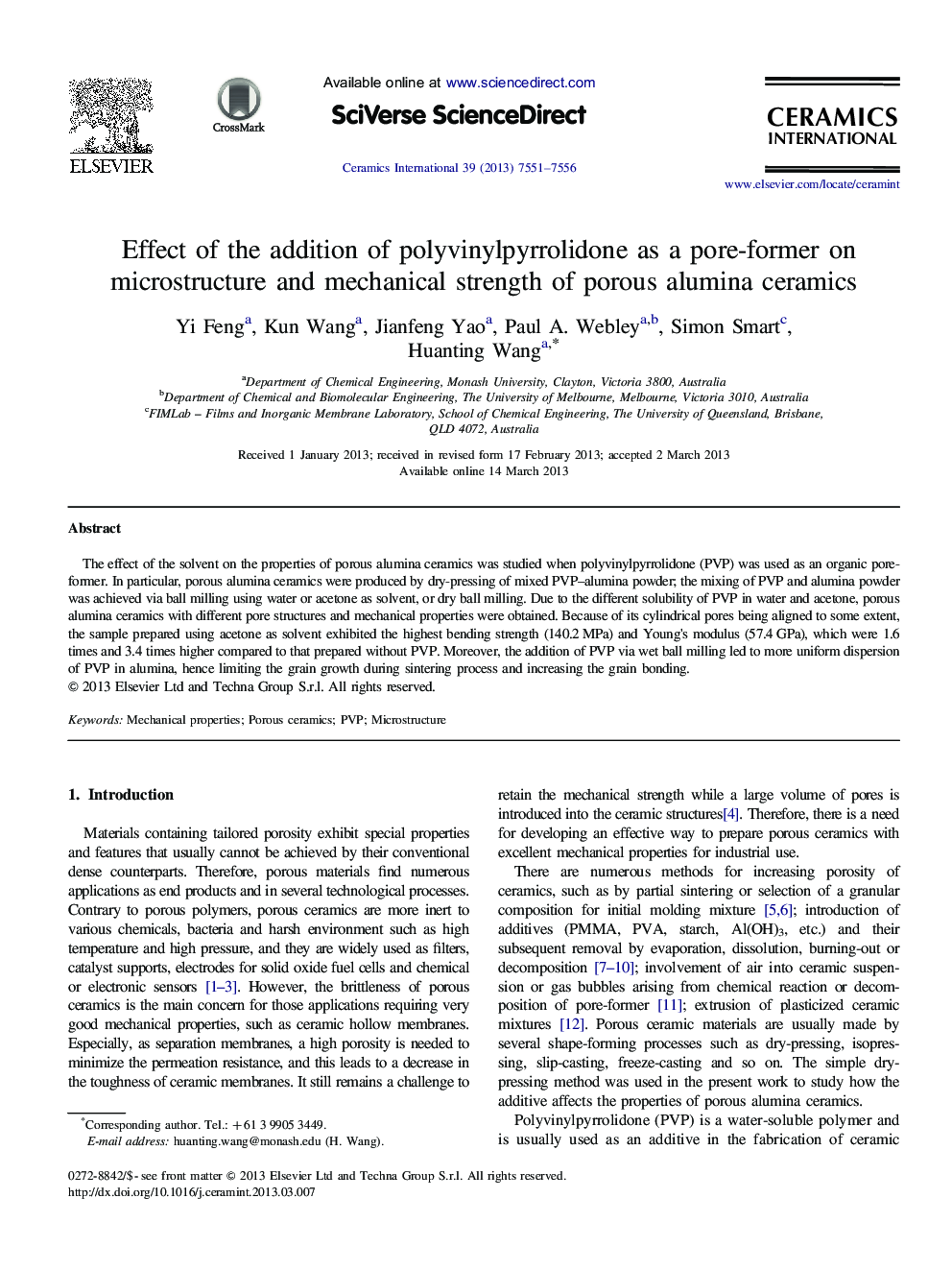| Article ID | Journal | Published Year | Pages | File Type |
|---|---|---|---|---|
| 10625603 | Ceramics International | 2013 | 6 Pages |
Abstract
The effect of the solvent on the properties of porous alumina ceramics was studied when polyvinylpyrrolidone (PVP) was used as an organic pore-former. In particular, porous alumina ceramics were produced by dry-pressing of mixed PVP-alumina powder; the mixing of PVP and alumina powder was achieved via ball milling using water or acetone as solvent, or dry ball milling. Due to the different solubility of PVP in water and acetone, porous alumina ceramics with different pore structures and mechanical properties were obtained. Because of its cylindrical pores being aligned to some extent, the sample prepared using acetone as solvent exhibited the highest bending strength (140.2Â MPa) and Young's modulus (57.4Â GPa), which were 1.6 times and 3.4 times higher compared to that prepared without PVP. Moreover, the addition of PVP via wet ball milling led to more uniform dispersion of PVP in alumina, hence limiting the grain growth during sintering process and increasing the grain bonding.
Related Topics
Physical Sciences and Engineering
Materials Science
Ceramics and Composites
Authors
Yi Feng, Kun Wang, Jianfeng Yao, Paul A. Webley, Simon Smart, Huanting Wang,
